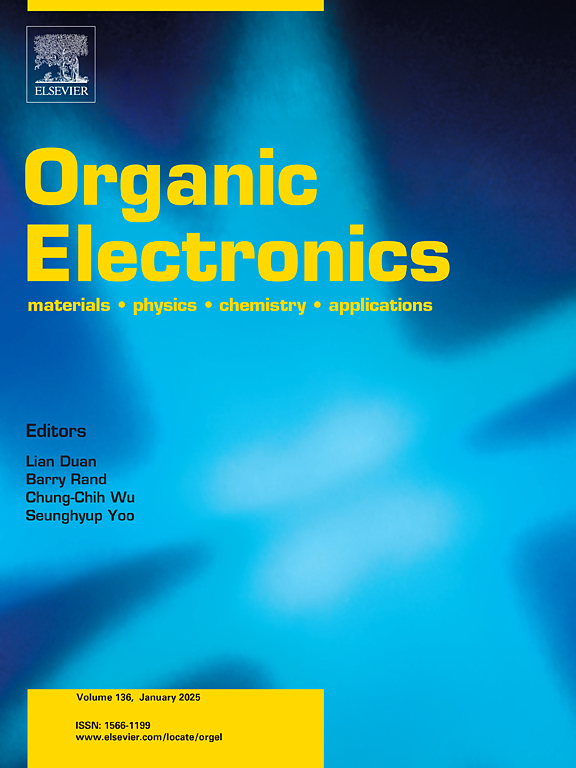Stretchable, flexible, transparent PEDOT:PSS electrodes by doping strategy
IF 2.6
4区 工程技术
Q3 MATERIALS SCIENCE, MULTIDISCIPLINARY
引用次数: 0
Abstract
Flexible transparent electrodes (FTEs) have been widely used in the field of flexible optoelectronic devices due to their simultaneous conductivity and optical transmittance. However, traditional fabrication methods often struggle to achieve an optimal balance between high conductivity and flexibility, and may also involve high costs and complex processes. Consequently, developing a cost-effective strategy for the large-scale production of high-performance FTEs is crucial. Here, high-performance poly(3,4-ethylenedioxythiophene):poly(styrenesulfonic acid) (PEDOT:PSS) spray-coated FTEs were prepared by optimizing the PEDOT:PSS conductive ink formulation through doping strategies. The PEDOT:PSS FTEs exhibit a surface resistance of 70 Ω/sq and a transmittance of 80 % at 550 nm. Notably, their optoelectronic properties remain stable after 100 bends, continuous illumination at 2.43 mW/cm2, and exposure to 90 % relative humidity. In addition, large-scale FTEs (15 × 15 cm) were successfully produced using the spray-coating method and effectively implemented in flexible touch screens. These results show that optimized conductive ink formulations have great potential for the preparation of low-cost, large-area and uniform FTEs.

可拉伸,柔性,透明PEDOT:PSS电极掺杂策略
柔性透明电极具有良好的导电性和透光性,在柔性光电器件领域得到了广泛的应用。然而,传统的制造方法往往难以实现高导电性和柔韧性之间的最佳平衡,并且可能涉及高成本和复杂的工艺。因此,为大规模生产高性能fte制定具有成本效益的策略至关重要。通过掺杂策略优化PEDOT:PSS导电油墨配方,制备了高性能聚(3,4-乙烯二氧噻吩):聚苯乙烯磺酸(PEDOT:PSS)喷涂FTEs。PEDOT:PSS FTEs的表面电阻为70 Ω/sq, 550 nm的透射率为80%。值得注意的是,它们的光电性能在100次弯曲、2.43 mW/cm2的连续照明和90%的相对湿度下保持稳定。此外,采用喷涂方法成功生产了大型fte (15 × 15 cm),并有效地应用于柔性触摸屏。这些结果表明,优化后的导电油墨配方在制备低成本、大面积、均匀的fte方面具有很大的潜力。
本文章由计算机程序翻译,如有差异,请以英文原文为准。
求助全文
约1分钟内获得全文
求助全文
来源期刊

Organic Electronics
工程技术-材料科学:综合
CiteScore
6.60
自引率
6.20%
发文量
238
审稿时长
44 days
期刊介绍:
Organic Electronics is a journal whose primary interdisciplinary focus is on materials and phenomena related to organic devices such as light emitting diodes, thin film transistors, photovoltaic cells, sensors, memories, etc.
Papers suitable for publication in this journal cover such topics as photoconductive and electronic properties of organic materials, thin film structures and characterization in the context of organic devices, charge and exciton transport, organic electronic and optoelectronic devices.
 求助内容:
求助内容: 应助结果提醒方式:
应助结果提醒方式:


